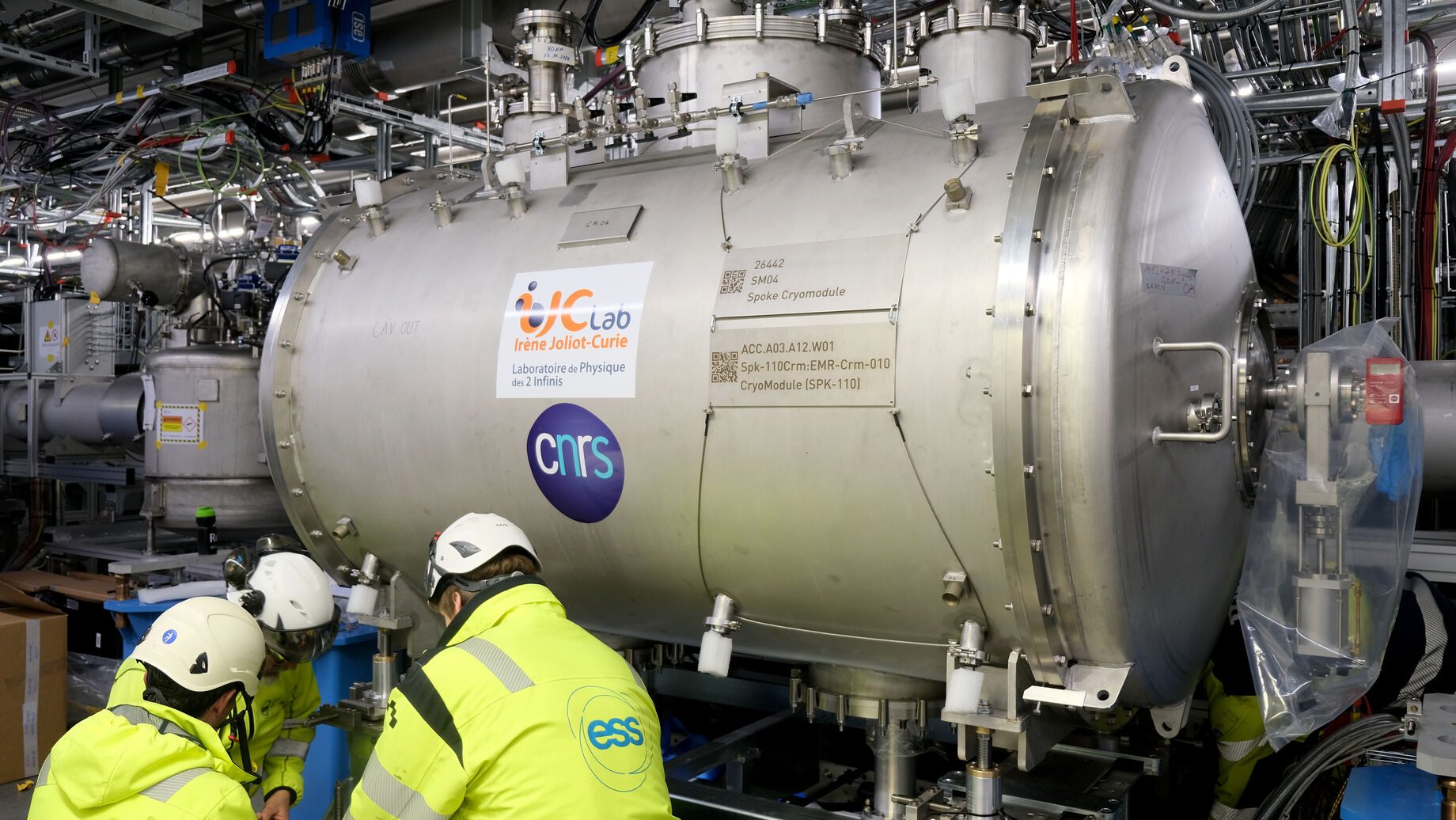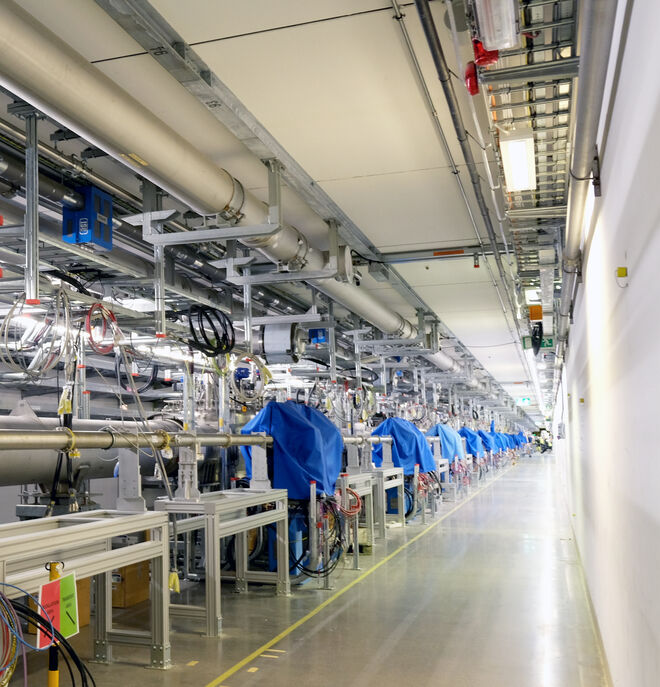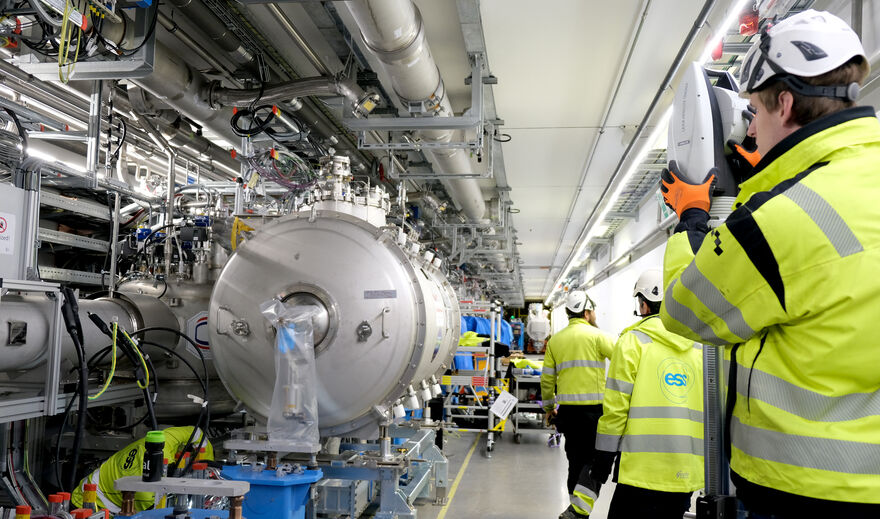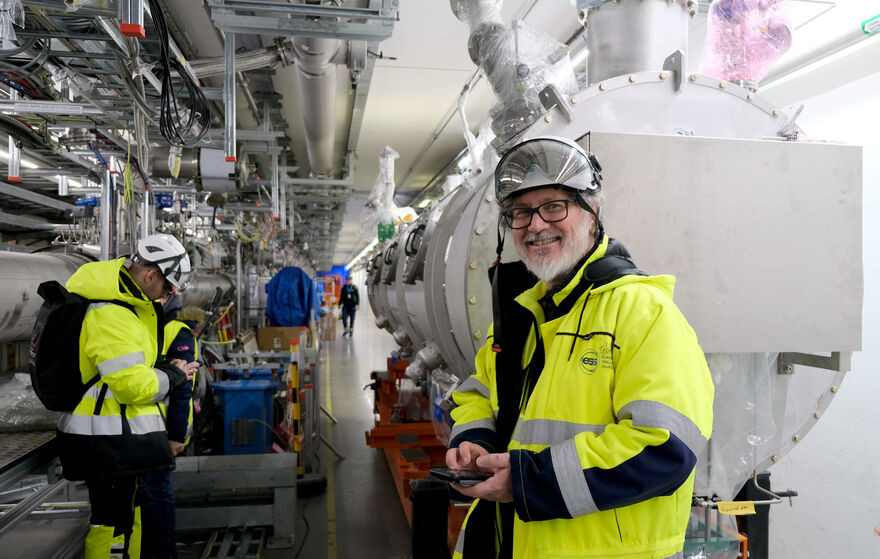
ESS this week began the installation of cryomodules in the ESS superconducting linac. This follows a long period of design, manufacturing and extensive testing and marks another significant milestone on the Road to Science.
In line with the re-baseline project plan, this week ESS started the installation of cryomodules in the superconducting section of the linear accelerator.
The pilot installation of one double-cavity spoke cryomodule and one medium beta elliptical cryomodule containing four cavity strings paves the way for serial installation of cryomodules to begin this summer. Ultimately, there will be a total of 43 cryomodules installed in the superconducting linac.
The ESS Linac group is overseeing the installation with the Superconducting RF section working in close collaboration with various teams such as Rigging, SAM, Vacuum, RF, Cryogenics, contractor Powerheat and several ESS In-Kind partners who delivered the Cryogenic Distribution System (CDS) and cryomodule components and are participating in the testing and installation tasks.
The CNRS (French National Centre for Scientific Research contributed 13 spoke cryomodules each with two cavities, developed at the IJC Laboratory in France and fully tested at the Freia Laboratory at Uppsala University, Sweden. CEA (Alternative Energies and Atomic Energy Commission) in France is responsible for nine medium-beta and 21 high-beta cryomodules each with four elliptical cavity strings provided as in-kind from INFN/LASA-Italy and STFC-UK respectively.
All elliptical cryomodules are fully tested in the ESS on-site test stand before installation. This involves exciting the cavities, cooled down to the operational temperature of 2K, with radiofrequency power – which is in principle the same that will happen in the accelerator tunnel, only the proton pulse is missing in the test phase. These ongoing tests are conducted by the Polish in-kind team from IFJ PAN in collaboration with the ESS Linac and Cryogenics groups.
To date, ESS has received 12 of the 13 spoke cryomodules, seven of the nine medium beta and six out of the 21 high beta cryomodules. For initial operations and Beam-on-Target only seven medium beta and two high beta cryomodules are required.
The two cryomodules will be connected to the valveboxes of the cryogenic distribution system, the waveguides of the RF distribution system and the vacuum envelopes of the Linac Warm Units.
The pilot installation will inform the detailed plan for the cryomodule serial installation scheduled to start this summer.
At the same time, repairs and optimisation of the cryogenic distribution system will proceed with the next cooldown foreseen for this summer.






























